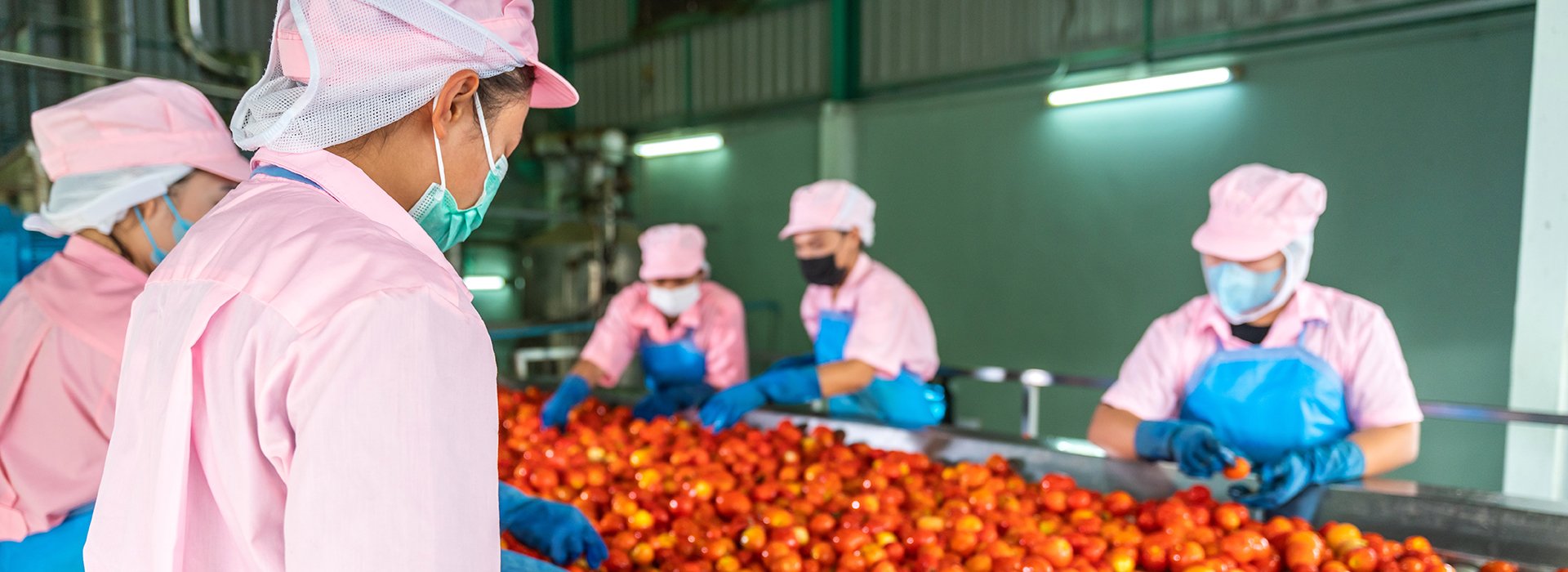Cultivating a Continuous Improvement Mindset in F&B
In high-pressure, low-margin manufacturing environments like Food & Beverage – a core segment within Consumer Goods – as well as other consumer products industries such as household goods and personal care, complacency can be costly. Staying competitive and adaptable means relentlessly finding better ways to work. Without a sustained culture of improvement, gains disappear, firefighting becomes the norm, and performance stagnates.

Continuous improvement (CI) offers the engine for this adaptability, not as a one-time programme, but as a persistent cultural mindset. While many companies launch Lean Six Sigma initiatives or periodic Kaizen events, true CI goes deeper: it’s an ongoing journey embedded in daily habits and values, not a checklist of tools. It focuses everyone, from executives to operators, on constantly seeking improvements rather than settling for “good enough.” This mindset shift is essential to thrive amid strict quality standards, evolving consumer tastes, and narrow margins. By contrast, a true CI mindset prevents this cycle of firefighting, replacing it with a proactive culture of prevention, problem-solving and innovation.
"A true CI mindset prevents the cycle of firefighting, replacing it with a proactive culture of prevention, problem-solving and innovation."
Leadership’s role in sustaining improvement
Top-down commitment and vision: In many organisations, continuous improvement fails because leaders treat it as optional or temporary. Building a continuous improvement mindset starts at the top. Senior leaders must champion CI as a strategic priority and clearly communicate that improvement is never finished. In practice, executives and plant managers should consistently talk about CI goals, allocate resources, and celebrate wins, signalling to everyone that “the way we do business is to always get better.” Leaders set the tone by making it clear that no matter how well the operation is running, it can always be improved. This commitment counters the complacency or short-term focus that often creeps in when margins are thin and daily fires demand attention.
Embedding continuous improvement into daily operations
Making CI part of daily work: One of the biggest risks in continuous improvement is treating it as an occasional event, which causes progress to stall between big initiatives. To prevent this, improvement must be woven into everyday operations. Leading F&B and consumer goods firms implement Lean-inspired routines such as short daily huddles or toolbox talks, where teams review performance, address issues, and plan small improvements. Frontline supervisors encourage operators to flag minor problems each shift, rather than waiting for a quarterly review. This daily discipline shifts the focus from firefighting to proactive improvement. Over time, the simple habit of asking ‘What can we do better today?’ makes continuous improvement part of everyone’s job.
Building CI capabilities at every level
A common barrier to sustainable CI is limiting it to a small group of specialists or an OpEx team, which leaves the wider workforce disengaged. To make continuous improvement truly continuous, organisations need to invest in capability building: equipping people at all levels with the skills and habits to drive improvement. This requires training, coaching, and structures for collaborative problem-solving so that CI becomes a shared capability rather than a niche expertise.”
Cultural enablers: psychological safety, ownership and recognition
A frequent reason CI fails is that culture works against it: employees fear change, expect blame when issues arise, or stay confined in silos. Processes and tools alone cannot overcome these barriers. What makes continuous improvement thrive are cultural enablers – above all psychological safety, a sense of ownership, and recognition for contributions. These elements provide the foundation for a CI mindset and turn improvement from a management initiative into part of how people think and act every day.
Metrics and governance to sustain the momentum
Even with a great culture and skilled people, continuous improvement can drift without the right metrics and governance to guide it. As the saying goes, “If you can’t measure it, you can’t improve it.” Effective CI requires defining Key Performance Indicators (KPIs) that track both the outcomes and the process of improvement, and a governance structure to review and act on those metrics.
Conclusion
Continuous improvement (CI) as the bridge to long-term resilience
The lesson from leading F&B and Consumer Goods companies is clear: continuous improvement is not about isolated projects, but about building a culture that sustains progress. In a volatile market, it’s the companies with a CI culture that prove more agile and resilient over the long run. Why? Because they’ve embedded the capability to adapt and solve problems at every level, every day.
Organisations with a CI mindset treat unexpected challenges – a supply disruption, a sudden quality issue, a shift in consumer demand – not as crises, but as opportunities to learn and get better. Their teams are used to analysing root causes and iterating solutions, which means they can bounce back faster. This agility to respond, recover, and even excel amid change is the hallmark of resilient organisations. Continuous improvement, in effect, becomes an internal engine for agility: it powers other strategic initiatives (like supply chain resilience or digital transformation) by ensuring the organisation never stops learning and adjusting.
One of the biggest risks after any improvement effort is backsliding – processes quietly slipping into old habits once attention wanes. A strong CI culture is the antidote to backslide. It instils an expectation that standards will not only be maintained but further improved upon. For example, if a plant implements a new quality control system as part of a digital upgrade, a CI mindset ensures that employees will keep fine-tuning that system, updating procedures, and training newcomers, rather than gradually ignoring the new process. In this way, continuous improvement acts like an immune system for the organisation – it catches deviations or inefficiencies early and corrects course before they grow into big problems. Over years, this yields a compound effect: companies with deeply ingrained CI tend to become markedly more efficient, safe, and customer-focused than peers who lack that culture. Studies repeatedly show that organisations with highly engaged improvement-focused employees dramatically outperform those without them on key metrics (productivity, safety, quality, profitability). The difference isn’t from one big leap, but from the cumulative impact of thousands of small improvements driven by a committed culture.
For senior executives and operations leaders, the message is clear. Technology, new equipment, and clever strategies can set the stage, but it’s a continuous improvement mindset that turns one-off gains into lasting excellence. Fostering this mindset means treating improvement not as a project or a checklist, but as a perpetual journey – one that engages every employee, every day, in making things better. It requires leadership that is relentless in asking, “How can we do this better?” and a workforce that feels empowered to answer that question. The reward is a business that doesn’t just implement changes but sustains them and keeps building on them. This is how F&B and Consumer Goods manufacturers can thrive amid complexity: by creating an organisation that’s always learning, always adapting, and never satisfied with yesterday’s success. As one Nestlé executive described their CI programme’s goal, it was to engage everybody in everyday improvement to “accelerate performance improvement and ensure sustainability”.
When continuous improvement becomes ingrained in the culture, the company gains a self-renewing source of competitive advantage – one that carries short-term transformations into long-term resilience and prosperity.
Author

